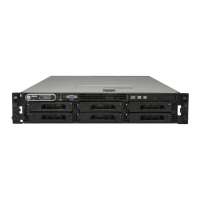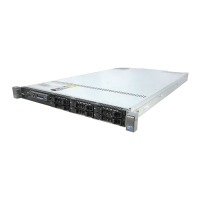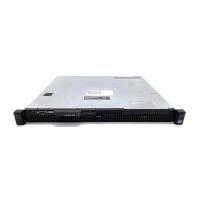89DELL.COM/PowerSolutions
Reprinted from
Dell Power Solutions,
May 2008. Copyright © 2008 Dell Inc. All rights reserved.
deployment with Dell PowerVault storage,
and flexible RAID configuration and man-
agement tools. The controllers support
Microsoft® Windows Server® 2003 with
Service Pack 1 (SP1) (32-bit and 64-bit),
Microsoft Windows Server 2008 (32-bit
and 64-bit), Red Hat® Enterprise Linux® 4
Update 5 and Red Hat Enterprise Linux 5
(32-bit and 64-bit), Novell® SUSE® Linux
Enterprise Server 10 (64-bit), Microsoft
Windows® XP with SP2 (32-bit and 64-bit),
and Microsoft Windows Vista® (32-bit and
64-bit) operating systems.
ENHANCED PERFORMANCE
The PERC 6 is designed to increase per-
formance in each of the four key areas
that can affect controller performance:
hardware features, caching policies, read
and I/O policies, and software features.
Each is important and should be consid-
ered when evaluating a RAID controller in
a host server along with other server fea-
tures that may affect performance, such
as the OS and hard drives.
Organizations should also keep in
mind that different applications display
different workload characteristics, and
that these workload footprints can affect
server performance. However, many
applications can be categorized as having
a sequential read/write profile or a
random read/write profile. Sequential
read/write applications typically include
media streaming, backup and restore,
and network attached storage and near-
line storage applications. Workstation
and file servers also handle large data file
read/write requests, making sequential
data performance a critical performance
requirement in enterprise environments.
For these applications, storage subsys-
tem performance is typically measured
by sequential throughput, in megabytes
per second.
Random read/write applications typi-
cally include transaction processing
applications such as databases, Web-
based e-commerce applications, and
other multitasking business solutions. For
these applications, storage subsystem
performance is typically measured in
I/Os per second.
Hardware features
The PERC 6 continues the Dell focus on
designing RAID solutions based on the
latest interface technologies, from PCI to
PCIe, from parallel to serial. Employing a
ROC integrated circuit (IC) featuring a
high-speed, 64-bit, error-correcting code
(ECC)–protected DDR2 SDRAM interface;
a hardware RAID assist engine for parity
Figure 1. Dell PERC 5 and PERC 6 controller architectures
PERC 5 PERC 6
RAID levels 0, 1, 5, 10, and 50 0, 1, 5, 6, 10, 50, and 60
Enclosures per port Up to three Up to three
Ports 2 x 4 wide ports 2 x 4 wide ports
Write policies Write-through and write-back Write-through and write-back
Read policies Normal, read-ahead, and adaptive Normal, read-ahead, and adaptive
Virtual disks per controller Up to 64 Up to 64
Cache memory size 256 MB 256 MB (up to 512 MB
for PERC 6/E)
PCIe link width x8 x8
256 KB, 512 KB, and
1,024 KB stripe sizes
4
SATA NCQ support
4
Global, dedicated, and
affinity hot spares
Global and dedicated
hot spares only
4
Online capacity expansion
4 4
Hot-swappable drives
4 4
Mixed-capacity physical
disk support
4 4
Hardware exclusive OR
(XOR) assistance
4 4
Figure 2. Feature comparison of Dell PERC 5 and PERC 6 controllers

